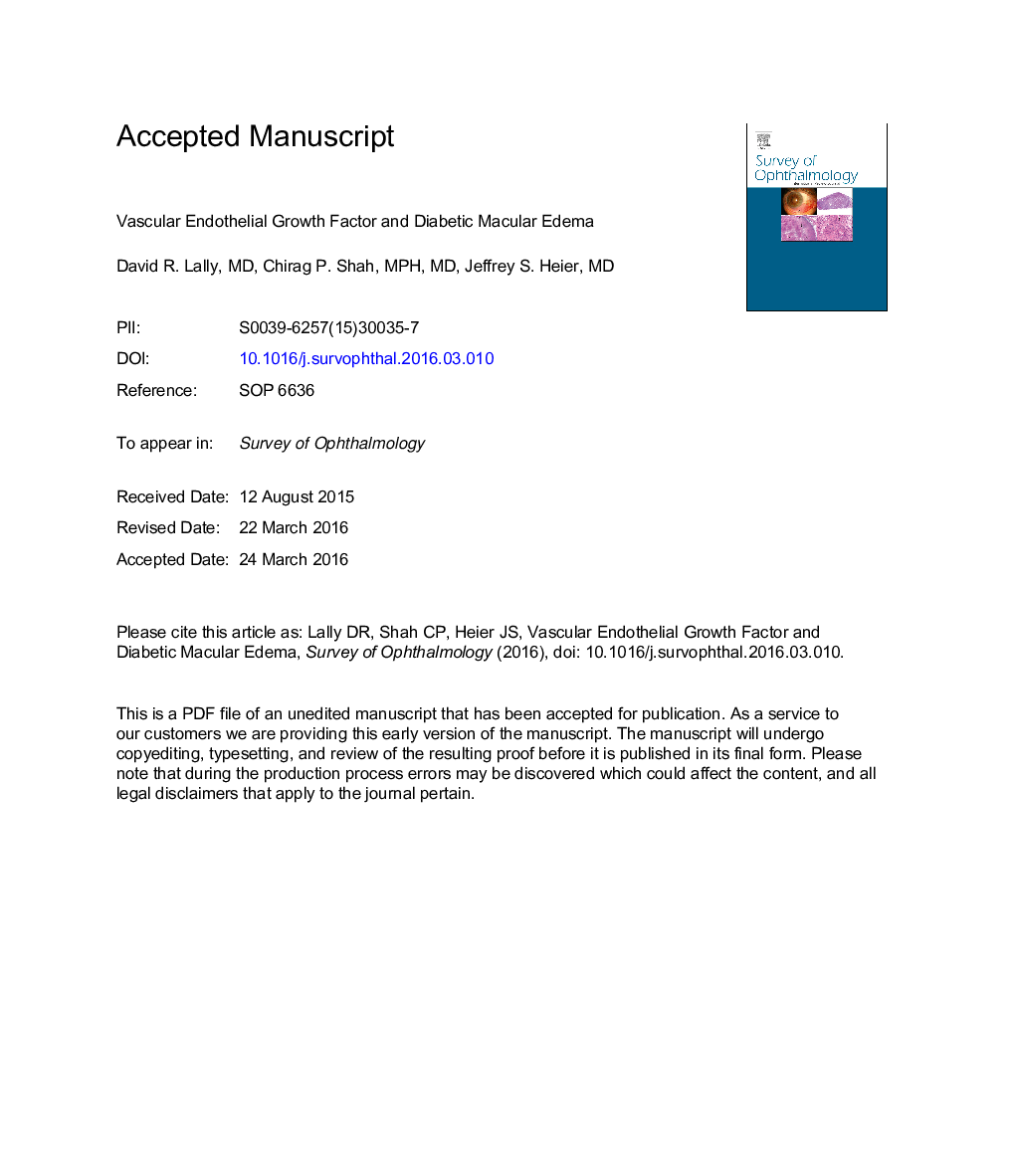| Article ID | Journal | Published Year | Pages | File Type |
|---|---|---|---|---|
| 5705768 | Survey of Ophthalmology | 2016 | 22 Pages |
Abstract
Diabetes mellitus is a major global health epidemic, and diabetic macular edema is the leading cause of vision loss in this population. Macular focal and/or grid laser photocoagulation applied to microaneurysms and thickened retina had long been primary therapy for diabetic macular edema. Chronically elevated serum glucose is known to cause breakdown in the inner and outer retinal blood barrier resulting in upregulation of vascular endothelial growth factor (VEGF). Intravitreal anti-vascular endothelial growth factor agents, including ranibizumab, bevacizumab, and aflibercept, have been shown in randomized clinical trials to be superior to macular laser for the treatment of clinically relevant diabetic macular edema. The READ-2, RISE/RIDE, and RESTORE trials established ranibizumab's superiority to macular laser, whereas the BOLT trial demonstrated bevacizumab's superiority to laser. The DRCR.net Protocol T results showed that intravitreal aflibercept, bevacizumab, and ranibizumab were all effective in reducing retinal thickness secondary to diabetic edema and in improving vision. When the presenting vision was 20/40 or better, visual improvement was equivalent. With eyes presenting with 20/50 or worse vision, aflibercept was superior with respect to visual improvement. Intravitreal anti-VEGF therapy can be burdensome for the patient and health care system, often requiring monthly treatment visits. To reduce burdens, anti-VEGF strategies are in development to lengthen the treatment interval.
Keywords
Related Topics
Health Sciences
Medicine and Dentistry
Ophthalmology
Authors
David R. MD, Chirag P. MPH, MD, Jeffrey S. MD,
